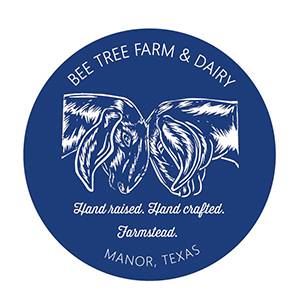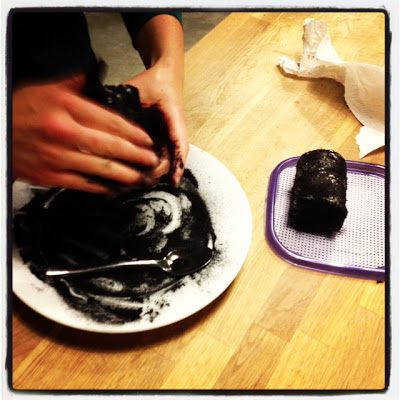How to Make Cheese in Just 10 Easy Steps
So. You like, no you love, cheese. I mean, for someone like you, cheese has become its own dietary planet, a new group within your food pyramid. It’s not enough that cheese is accessible just about anywhere you would purchase normal groceries. It’s not enough that all of the hard, tedious work has been done for you by people who studied in the French Alps, people who walked in mountains with goats, who took chemistry to understand the science of cheese. For you, it’s not about perfection, it’s about turning one thing into something else right there at home. Perhaps you also sniff at the shiny packages in the cheese aisle. “It can’t be that hard,” you shrug. After all, it’s just adding some culture to some milk, applying heat. Stirring a little. A child could do that. Without understanding that you are being an over-confident smart-ass, you try to make some cheese. And the truth is, actually, it really is incredibly easy.
Step 1: Get milk. Or maybe you’ve got milk? Where’s that milk from? Did you buy it at the supermarket? If yes, then it’s pasteurized. Is it ultra pasteurized? IT IS?! Turns out that it’s not so easy to make cheese from that stuff. So you should probably do what I did, in an effort to be more straightforward about the process, in an effort to bypass the hassle of tracking down some low-heat pastuerized or raw milk – I just bought a goat. Easy, right?
Step 2: Get a goat/cow. Depending on the age of the animal, you might need to prepare yourself to wait just a bit longer than expected for cheese. I decided to take the very long route in order to save some cash. I bought baby goats for almost nothing from a dairy. It wasn’t until after making this affordable purchase that I came to understand the exorbitant cost of feeding baby goats. You can bypass this step, however, by purchasing an adult animal that’s already full of milk. Voila! You’re nearly there with home cheese making! This is also an appropriate time to scratch your head and re-consider whether it’s time to just go ahead and buy some of that store bought milk. Nah. Too easy.
Step 3: (Skip this step if you went ahead and got the adult animal). Raise the goat/cow. This will lead to months worth of anecdotes related to animal escapes, animal illness, general animal care, animals dancing atop vehicles, animals ruining gardens, animals falling asleep in your lap, you falling in love with the animals. It’s likely that almost a year has now passed since the time you first decided to make cheese. As you pull the goat off the car, ask yourself, is this still worth all the trouble? (*Note: there is still no cheese).
Step 4: Breed the animal. This is tricky. It might require that you get another animal just to breed the cheese-producing animal. Once you are confident the deed is done, step back and eye your goat/cow suspiciously for a month or two. Is anything going on in there? When you are certain something is, in fact, going on in there, then it’s time to get excited because you are now finally much closer to cheese.
Step 5: Purchase cheese books and equipment. I recommend buying only one or two books and then relying on the internet for the rest. All of the basic equipment can be purchased at places like Target, and the exotic, fancy stuff can be found online at various cheese stores like Getculture.com. At around this time you’ll want to start reading some of those cheese books. It may quickly become evident that cheesemaking is perhaps more of a science than art. Or maybe it’s more of an art than science? You consider buying barometers and building a dairy room in order to control temperature, humidity, and mold spore growth. You wring your hands over the possibility that cheese making might not be your bag. In fact, after two chapters of the book, you start to resent cheese making. You tear open a little log of cheese purchased from the store and start nervous-eating. Hey, that cheese is pretty good, was relatively cheap, and already made! Why in the world would you make your own cheese?! What were you thinking? Your thoughts are probably interrupted at this time by frantic bleating from outside. Something is wrong with the goat/cow. Sounds like a baby goat/cow might be coming.
Step 6: Deliver a baby goat/cow. It’s pretty much as easy as it sounds. Unless it isn’t, in which case you should go ahead and plan for the worst. Bring into the barn with you towels, latex gloves, iodine, a cell phone with the number for a farm vet, and a small flask of something to calm the nerves. Your nerves, not the animal’s nerves, just to be clear. Prepare yourself for some gory moments, some scary moments, and then some really delightful moments and keep your eye on the prize: cheese! (Wait, didn’t step 5 convince us that we don’t want to make cheese?!). Oops, too late.
Step 7: Wait a week. Yep. All that anxious time building pastures, raising animals, reading about the wonders and mysteries of cheese making, and now you have to wait some more? Calm down, what’s another week? The first week, the milk is no good for cheese making since it’s full of sticky, high protein stuff called colostrum that the baby animal truly does need more than you, no matter how strong your addiction to cheese. Really.
Step 8: Milk the animal. It’s not advisable to milk your animal in its natural habitat (pasture), which is sometimes called “field-milking.” Field milking can lead to all kinds of pitfalls unless you’re working with a well-trained animal. During that year you waited (im)patiently for cheese, you hopefully wrangled/cajoled/bribed someone into building you a proper milk stand or milking stanchion. Lure your darling animal into the stand using something delicious. We use grain and alfalfa. It works 80% of the time. Grab the shiny milking pail that you probably purchased one year ago, along with the goat/cow, and finally put it to good use. Attempt to procure milk from the animal in whichever way you were taught, or googled, or You Tubed, or learned growing up (lucky!). Prepare to dodge a hoof. Prepare for the shiny milk pail to accidentally become a hoof rest or a goat boot. Re-adjust your strategy and gently pull the animal towards you. Look down into your now manure-encrusted milk pail where less than 1/4 cup of soiled milk has pooled. Weep quietly into the side of the animal. Release her back into the pasture. Try again tomorrow. Go to bed and dream of cheese.
Step 9: Gather the milk. It’s now been probably about three weeks since those babies were born. You’ve been kicked in the face, stomped in the hand, peed on, screamed at, and drenched with rogue sprays of milk. Somehow you stopped resenting the animal and the animal stopped resenting you. You now have a fridge full of milk. Pull out the stainless cheese making pot purchased a year ago when you bought the milking pail, around when you bought the animal. Pull out all of the cheese making accoutrements you’ve accumulated for just this moment. This might include your little cheese book, some rennet (to make the whey separate from the milk), the culture, a thermometer, a slotted spoon. Read directions; follow them exactly or follow them loosely. Unleash your natural talent, bowing your head over the milk there in the pot. It took some guts to get here, no matter how that cheese ends up tasting. Heat, stir, sprinkle, cover with cloth, peek in at the curd. Try to wipe that smile off your face.
Step 10: Taste your cheese. It’s probably been about three days now since step 9. A few more things happened, if you followed those directions at all. Probably you cut some curd, you stirred the curd, you scooped and drained it. Probably all of the little plants near your front door and some of the other animals benefited from the cheese by-products, if you were kind enough to pour whey over their food. Go to the pantry and open a box of crackers, pour a glass of wine. Smear the fresh cheese onto the cracker. Take a bite. So, what do you think? Is cheese making art or chemistry? More chemistry than art? Does it matter? Because you realize, in that first bite, catching the movement of your goats/cows out of the window: it’s neither. There’s a little magic there in that cheese. Just magic. And it’s really as simple as that.
*NOTE: You can bypass most of steps 2-9, stopping briefly on step 5, if you go ahead and buy stuff from the store – either the milk or the cheese. But what’s the fun in that?
Categories:
Cows, Dairy, Goats, Motivation, Recipes








2 Comments
Darren Lanphere
March 14, 20137:33 pm
This is what I love the most – CHEESE. Having a ranch with domestic animals that can produce milk is very beneficial. They can serve as a source of income.
Stupid Girl and the Train Wreck
March 3, 20133:30 am
Making my own cheese its one of the main reasons I wanted a goat. The only times I tried it were with milk from the supermarket. Yeah, I know. I really didn't think it would work but I wanted to try.